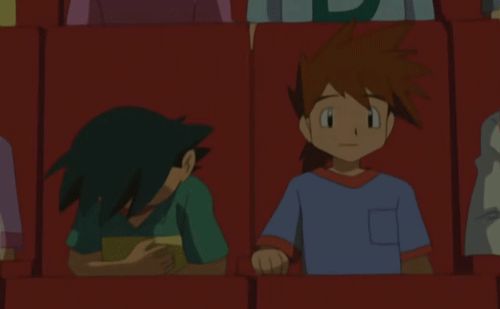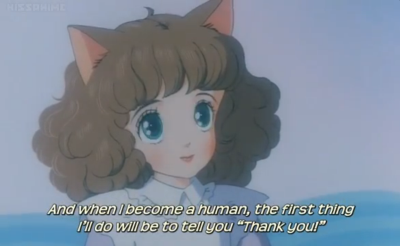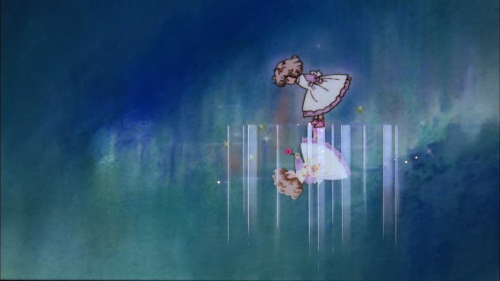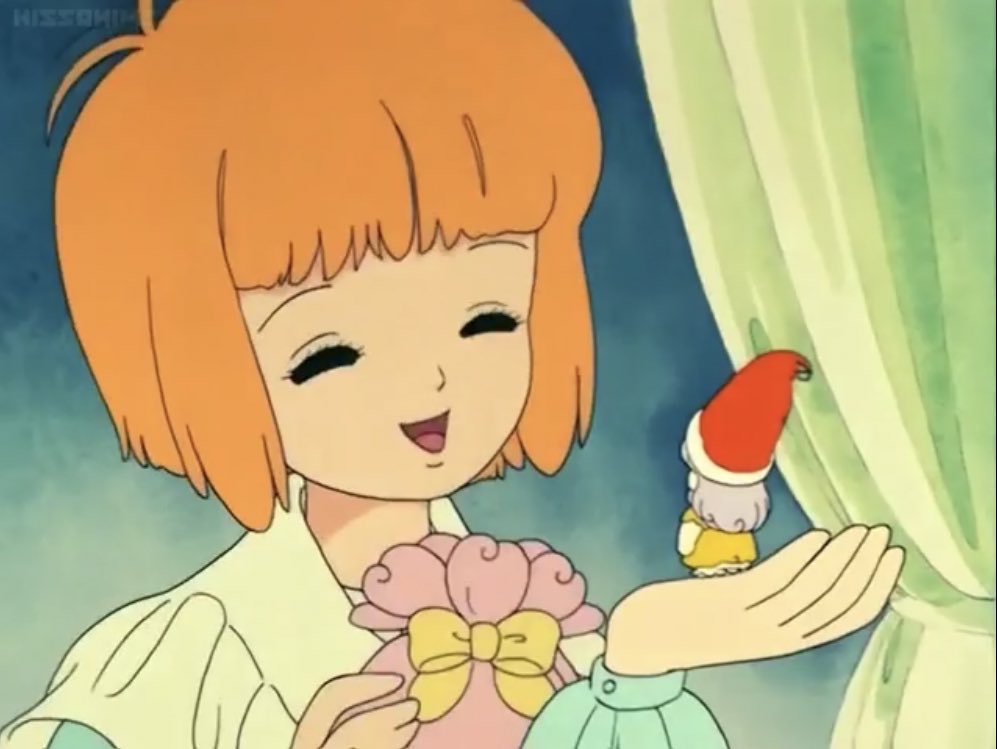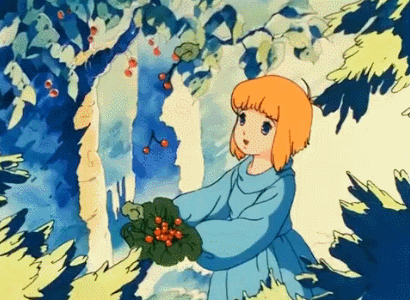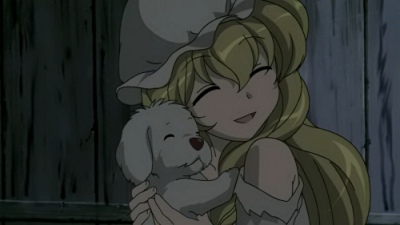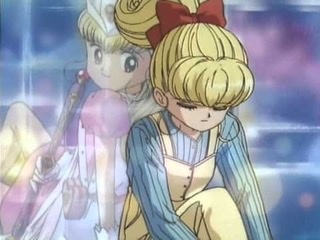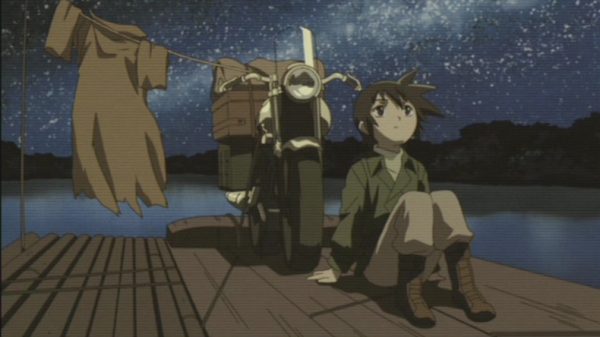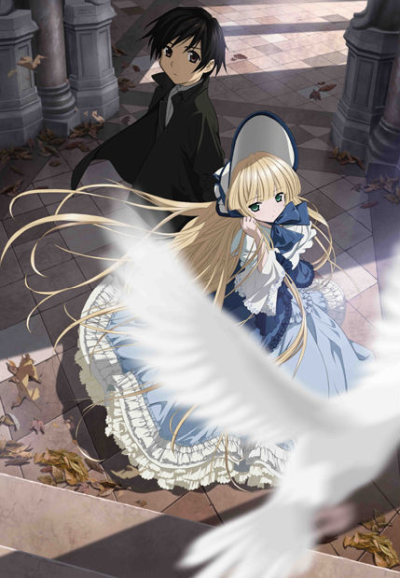Anime Recommendations
I watch a lot of old and obscure anime, so I decided to write little recommendations for works most anime fans stateside are familiar with, leaving out those that need no introduction. Take it as a general rule that I enjoy and recommend most World Masterpiece Theater anime too (mind that they're adapted from old works, so some aspects can be dated) and if you love Studio Ghibli movies and wish there were series, do watch the lucky few that got subtitled in English (like My Daddy Long Legs, Romeo's Blue Skies, etc.!) or even dubbed... while popular in Japan, here in the Middle East, and in many European countries, but few have been dubbed in English (those of you who grew up watching the Christian Smile of a Child Network might have seen a few dubbed, though, like Little Women!)
A sweet and very funny show about an unabashedly tomboyish rabbit named Patty Hope-Rabbit (Patty Rabbit) who moves to Maple Town and the friends she makes there. I think if you enjoy collecting Sylvanian Families or reading the works of Beatrix Potter, you'd probably enjoy this series! Animals in bonnets and dresses, a bunny lecturing her spirited younger sister about ladylike conduct, a train heist in the first episode, a bumbling bandit wolf, all sorts of fun!  But it isn't a shallow show at all, in fact, it's such a beautifully animated and well-written show, that it is better remembered than the toy line it was designed to sell. It's a very wholesome, cartoonishly fun, yet thoughtful show that tells sensitively written stories about issues children and even adults might face in life, like grief, jealousy, loneliness, mourning the loss of loved ones, children who are neglected by parents or subjected to favouritism, children who are ignored and silenced with money and material gifts, parents coping with letting an adult child live their own life, overcoming traumas and phobias... no matter how heavy a subject might be, it always ends in a gently reassuring manner, the beautiful watercolour settings and gentle soundtrack makes it feel soothing, and there's always moments of fun, humorous dialogue, and cartoony yet exciting clashes with villains! 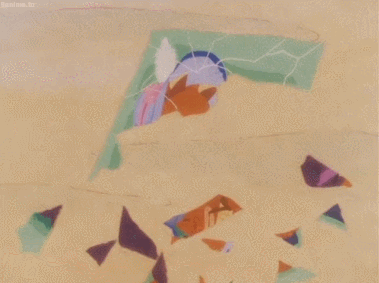 26 episodes of Maple Town were dubbed into English and then redubbed into Arabic as أرنوبة و دبدوب. The English dub is sadly partly lost media, although fans make their own copies and make efforts to remaster it. In the second series, New Maple Town Stories: Palm Town Chapter, continuing from the end of the first series, Patty moves to Palm Town with her aunt Dr. Jane and uncle Dr. George who run Pika Clinic, to help her learn how to be a doctor in the future (nurse or doctor seem to be popular career choices for strong-willed and tomboyish girls in old anime, likely Candy Candy's influence), and once there, she meets many new caracters, like her new friend, the wealthy grocer's daughter, Rolley Cocker, who was all the social graces Patty lacks but is very persuasive and spirited... and the new villains, bumbling, Team Rocket trio-level nuisances, the down-on-their-luck cat brothers, who style themselves after 1930's mobsters (even wearing fedoras, suits, and spectator shoes!). The second series was dubbed in full into Arabic as مدينة النخيل. It was never dubbed into English, although fan-made subtitles are an ongoing project. 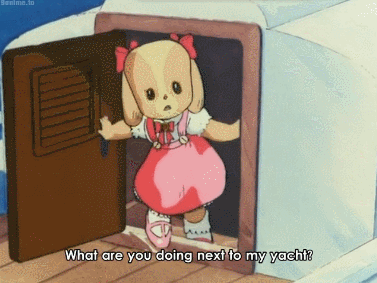 Although the villains do use real weapons, like swords and guns, the violence is either cartoonish slapstick (my favourite examples include pancake cat brothers after slamming into a wall) or, if realistic, never leads to direct injury, because even the villains in these shows are not all that bad. Yota, the older of the cat brothers, he might threaten to do horrible things like kill hostages and hungry Gretel threatens to eat the kids sometimes, neither is ever shown using lethal force on any child characters, and in fact, Yota has a consistent soft spot for orphans and children in bad situations... he cries over them and is easily tricked by Bobby's brothers when they claim to be orphans, stealing to feed them and provide them with shelter.
Rating and Content Warnings: all ages-friendly dubbed, full of good life lessons, the subtitles of the eighth episode of Maple Town have two instances of adults swearing, Palm Town's subbing group has a rude name, but otherwise, all clean! Some aspects of the show are dated and some heavier topics could be triggering (namely, corporeal punishment is still very common in the time it was made and the real world eras inspiring them, so there's quite a bit of spanking and talk of stricter mothers giving beatings... it might make for good discussions on how things can be better handled now). Some episodes deal with trauma, death, or pregnancy (Rolley's mother nearly miscarries in an oddly fantastical episode of Palm Town, due to her making a wish on a magic lamp that the baby be born sooner, although her mother recovers and the baby is delivered safe and healthy later on, starring in episodes of her own too... so the genie episode can be easily skipped). There might be specific incidents that are frightening (a little girl nearly drowns in the past, which leads to her fear at present time, but the episode is about her healing, there's also two Palm Town episodes where they believe some kind of ghost is haunting a building, but it's always revealed to be a regular person at the end).

Beautifully drawn and animated, faithful to Ooshima Yumiko's manga style (right down to Chibineko's painted doll-like features), this is the story of an abandoned pet kitten, who imagines she will someday be human, left out in the rain... she's rescued by a depressed college student who failed his exams and felt directionless until he took in the little kitten to raise. The little kitten is overjoyed! Thinking naively that life is like a fairy tale, she believes she will someday turn human and can thank the boy who saved her! ... but while the anime depicts all the cats as tiny humans with cat ears and tails, she is... only a cat. That is all she will ever be. She meets the older, more experienced stray Persian cat Raphael who encourages her to learn more about life and what it means to be a cat and also befriends another young pet kitten who is as naive as she is and they go on many adventures, as cats do.
This is an old favourite of mine and one of the few movies I could happily watch over and over again! It is light and sweet, a bit sad as Chibineko realizes her love and fairy tale dreams cannot come true, but also lively, imaginative, and fun. Chibineko is a curious and inquisitive, full of boundless energy and wide-eyed idealism, but she learns and matures in her own way over the course of the film too! Rating and Content Warnings: shoujo anime is geared at 7-14 year old girls in Japan, it's a fun film for any cat lover, I'm sure! It might be better suited to the slightly older and/or more aware viewer for a few themes: while the whole film is very innocent, not sexualized in any way, the stray tom-cat, Raphael, seems romantically interested in Chibineko or what she might be like as an adult (he largely keeps to himself and isn't a caretaker or trying to groom her, they're not even romantically involved at present, the most he does is try to teach her to accept that she is a cat and tells her about a cat equivalent of Heaven), the age difference might put some folks off. Animal abandonment, (onscreen) animal death/hunting, the food chain, and even the concept of an afterlife are discussed in film.
A very sad anime that nonetheless has an undercurrent of hope and moments of joy, based on a novel (The Black Brothers) inspired by a real event (the sinking of a boat carrying boys sold from Switzerland to work in Italy as chimney sweeps—the author wrote about a few kids surviving a similar incident). Romeo is an innocent, but strong, farmer's son with strong morals (he has a cute animal friend in Piccolo the ermine!). Alfredo is a quiet, intelligent boy from the city, ill-suited to hard labor who wants only to study to accomplish his goals. Romeo wins initially aloof Alfredo over with his kindness! They become very close friends, comforting and inspiring each other, and their friendship is very heartwarming to watch.
The rest of the cast is also stellar, from Romeo’s sympathetic but weak-willed master sweep Rossi, to the endlessly kind and enduring “Angel” who brings Romeo relief in his darkest hours, to Nikita who tries so hard to pass herself off as mean and tough as any of the thieving boys in her gang while having the gentlest heart... everyone plays their role and make for an unforgettable story. Rating and Content Warnings: all ages-friendly in Japan, might be better suited for older and less sensitive children elsewhere; the kids spend a day locked up in a seedy bar where adults drink, one sympathetic adult character is frequently drunk, the most violent and foul of the masters/padrones makes one creepy comment about Alfredo (the chimney sweep he purchases), and he's overall very abusive and cruel (ripping his books, throwing things at him, hitting him, etc.). There is an on-screen death and funeral of a child character. Small amounts of blood, there are physical fights, gunfire, and attempts made by adults to kill children.
Another sweet friendship story, Little Memole (dubbed in English as Wee Wendy and in Arabic as Mimi As-Sagheerah) is the story of a tiny, gnome-like race of aliens that descend on Earth, as their planet is menaced by cats; Memole is the plucky grandaughter of their chief and she is always getting into trouble. Her people are very cautious and wary of larger creatures like cats and humans, but brave Memole befriends a sickly and frail human girl, who she and her friends save from death, only to be surprised to find the girl would rather have died! I was very surprised by how frankly this show treats depression and its symptoms, while keeping a whimsical and lighthearted tone, in a simple and easy way for kids to understand (one early episode is dedicated to Memole trying to find out why Marielle doesn't want to eat, that eating is a sign of health, and a wild chase leading Marielle to run and expend more energy than she normally ever does, making her feel more alive). It reminds me of Inside Out, but even subtler, as the focus is just as much on the cute, tiny aliens exploring Earth with a sense of wonder and getting into mischief and scrapes. The art style is so charmingly shoujo and swirly, the hand-painted backgrounds are soft and sweet, and the thick locks of hair Marielle has remind me of ragdolls. Very cozy atmosphere.
Rating and Content Warnings: all ages-friendly, I don't remember ever seeing anything objectionable in the show so far (I am still in the early episodes), but the main human character (Marielle) is depressed and talks about wanting to die, so might be best for older viewers who can understand the story? But it could also help sad younger kids who already have such thoughts too, and I think the kids who wouldn't understand the depression story will probably just have fun watching the tiny aliens exploring the world and being chased by the cat and outsmarting it or similar. 
Rating and Content Warnings: all ages-friendly, full of good life lessons, nothing objectionable in the episodes I've seen, there might be specific incidents that are frightening (a little girl nearly drowns, if memory serves, in the second season and that led to her fear at present time, but the episode is about her healing). A very funny series consisting of two-short episodes (like old cartoons with two 15 minute segments filling a half hour, unrelated stories, at other times, they're two-parters), based on the semi-autobiographical manga of the same name by the real-life Sakura Momoko, who gives her name to the main character, more commonly known by her nickname, Maruko-chan. Maruko-chan is an eight, then nine year old girl growing up in Showa era Japan. She is a lazy slacker and kind of whining, but also very shrewd and tries to sweet-talk her grandfather to get money for sweets, and her carelessness gets her into all kinds of fixes. Being based on an actual person's childhood gives the story a much more relatable and true-to-life charm that most modern slice-of-life anime wholly lack, but the cynical and sarcastic narrator's commentary on the events unfolding adds a great deal of comedy... it's a great show to watch whether you're a small child or a nostalgic adult! ♥ Maruko-chan's enduring popularity makes it have three generations-wide appeal and the second series is ongoing, but is mostly anime originals with some remakes, the original series has more charm, being based on the author's memories. Rating and Content Warnings: all ages-friendly in Japan, otherwise, depends on whether it's dub (Arabic dub, for instance, omits all the alcohol references) or sub, might not be too child-friendly for other cultures, as Maruko's father drinks a lot. He also smokes around his kid because it wasn't known to be harmful back then. Maruko is a bit of a rude brat sometimes, but she's clearly not meant to be a role model and her bad habits get her into a lot of funny fixes (she's lazy, kind of manipulative, talks back to her parents, and lacks in motivation... but she's also a very kind, good-hearted girl underneath it all, who loves her friends, and she has a very sweet relationship with her grandfather, who's very much a kid at heart). There's one or two very sad episodes (the one with the puppy, the two-parter with Pusadhi also has a bit of a sad goodbye, and the episode where Maruko and Sakiko fear their parents getting a divorce). 
Although as the newest installment in the World Masterpiece Theater, it lacks the Ghibli-like style of the previous installments and has more of a moe look to it, there is still plenty of charm to this adaptation. It serves as a good introduction for younger kids to the original work, with some softer/kinder endings for some characters, and an undercurrent of hope in adversity, common to WMT anime. Cosette is a very sweet lead (rather idealized, like an old shoujo heroine, here) and her time growing and thriving under Jean Valjean's care is very lovely to see after all she suffered in the earlier episodes... and even those, painful as they were, had moments of beauty and joy (the field of lavender, raising Chouchou, playing with Gavroche, the memory of her mother, etc.).  Rating and Content Warnings: all ages-friendly in Japan, should be safe for most kids except those who are very sensitive... it's full of good life lessons (like all World Masterpiece Theater anime), but there is alcohol consumption (an abusive father figure is a drunkard), the Thenardiers are very abusive and cruel to main character Cosette (and one scene shows Éponine flinching while we hear an off-screen slap that the father is also physically abusive with his wife), minus sweet Gavroche who Cosette practically raises while still a young child herself. As it IS an adaptation of Les Miserables, although mostly told from the perspective of Cosette and softened for a child audience (one of the important child characters who are killed in the novel is kept alive in the anime, a little dog mentioned briefly in the novel is expanded into a much bigger role and named Chouchou to brighten up the sad atmosphere, Fantine being an unmarried mother is only subject of rumours with the show never confirming or denying), standard warnings for what happens in that book too, as good characters among the adults die and poverty and suffering is shown in a sobering and respectful fashion, even with the sugary sweet style. 
This is a more well-known series which finally received its well-deserved respect, but in case you're unfamiliar, despite the sugary sweet title, this is a very thought-provoking and beautiful story about telling stories and taking your own path in the world. It's a strange tale with many different elements and aspects of many different genres that can be enjoyed by small children and adults alike! There is humour, sweet romances, side-switching, character development, and so many folkloric and literary allusions and metatextual elements for those who love to delve deeper. The story begins with the death of an author (literally), whose soul cannot rest until he completes his novel, The Prince and the Raven... locked in an endless battle, the tale's chief protagonist and antagonist (a noble, all-loving Prince who shattered his heart to seal away evil and the cruel and nefarious Raven who was sealed, respectively) tire of the stalemate and break free of the story, into a strange, enchanted little German town called Gold Crown. The dead author, Drosselmeyer, decides a new character is needed to keep the story heading to his preferred tragic ending (because, of course, he believes true art can only be tragic!), and he calls upon... a little Duck in the lake, who he grants a pendant to transform into a girl to return the shattered parts of the now doll-like and hollow prince's heart. If it sounds strange, it absolutely is. Did we mention that Duck not only transforms into a clumsy, young girl but a graceful, ballerina-like spirit called Princess Tutu (the audience sees her as resembling Duck, ordinary folks in universe see only a giant glowing swan...), who retrieves the prince's scattered shards of emotion from the people they possess by dancing a pas de deux to help them work out their feelings? But also, there are also sword fights, spirits of scorned brides, a ghost knight, past lives haunting people, breaking free of roles imposed by others, humans being transformed into birds, and there is a ballet teacher who is a cat (Mr. Cat is the name, naturally) who jokingly threatens his students with marriage if they slack off on their training (this always inspires them to work harder, of course), who, despite all his bizarre feline antics, delivers some very sage advice now and then? 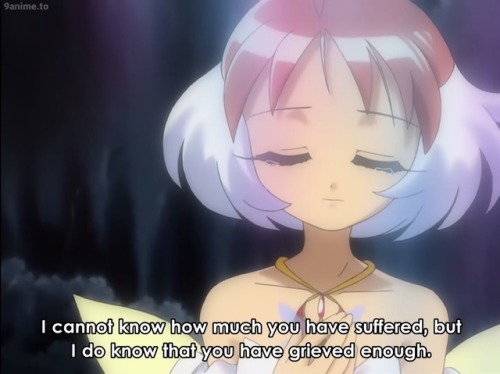 Rating and Content Warnings: all ages-friendly in Japan, I would say older children elsewhere (maybe 12 and up?), depending on how sensitive they are, as this anime, while clean and innocent, does delve in some dark subject matter (a pair of villains have a very abusive father-daughter dynamic, but the more sympathetic villain is redeemed and breaks free of those chains eventually, many treat the heartless prince Mytho quite badly as he lacks a sense of self [so girls other than the lead who like him often impose their feelings on him, treating him more like a doll]), as old fairy tales do, and a certain villainous character who is actually the same age as the lead despite looking a bit older has a rather risque design (her design show as much cleavage as possible and would frankly be unfeasible in real life without falling apart and exposing her, but it doesn't in show). The villains believing love is something taken by force is key to the second half and leads to some very disturbing imagery with a non-consensual kiss paired with violence. 
This is a little known magical girl series from the 90's that, while starting off very sweet and by the time you finish the first third, develops into a series that tackles the subject of the fate of worlds resting on the shoulders of child heroes seriously, while portraying them as ordinary children with typical interests (for Seiya, it's secret hideouts, goofing around with friends, acting like he's in a TV show, and yes, also his crush; for Ririka, it's things like dressing up, birthday parties, hanging out with friends, and her own crush). The show is also very good at foreshadowing and making callbacks that make you see what you previously didn't think much of in a different light... even the clip show episode had a beautiful exchange where a character voiced needing time to grieve. 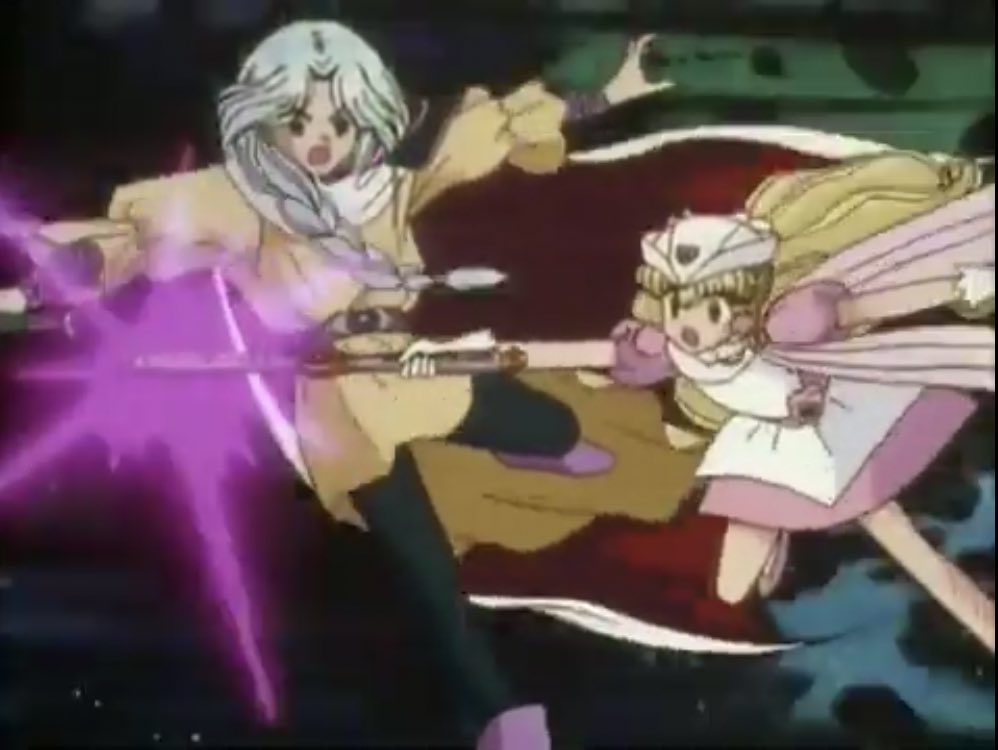 Keeping in line with the nurse theme, Ririka's powers are both offensive against monsters, but also heal the dark feelings that manifested them and restore the bodies of the injured. Ririka must serve the greater good. 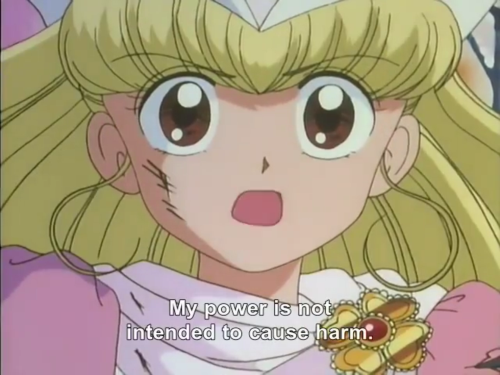 Rating and Content Warnings: all ages-friendly in Japan, the subs tend to use some coarse language at times (subs tend to do that), it should be safe for most kids, depending on how sensitive they are, there is major character death halfway through the series, brief shots with scratches and small wounds and a particularly nasty burn or two (one on a child character's hand, but later healed, one permanently disfiguring a villain's face). On-screen (child) character and animal death (wild, not pets or central to the story, but in large numbers) and an earth-like planet becoming lifeless and desolate. The battles in this show can get more intense starting in the second half... 
While Hunter x Hunter is not a little-known series by any means, the 1999 version by Nippon is less appreciated by western fans, who are likely to be put off by its age and lack of consistent art quality and polish compared to Madhouse, but in truth, this series has a more theatrical art style and has its own unique beauty and pathos, being a darker, more nuanced take on the manga's storyline, delving deeper into the psychology of characters than either the early manga or the 2011 version. For those unfamiliar, Hunter x Hunter is the story of a young boy named Gon Freecss who lives on an island with his aunt, Mito... he long believes his parents to be dead, until one day, when he's scolded by a man (Kite) who is forced to kill a fox bear to save the boy, he discovers the man knows his father... and his father is alive! He learns from the man that his father is a Hunter, the world's elite, and Hunters specialize in different purposes (largely bounty hunting, but some seek lost treasures, or seek to discover new kinds of animal species). Gon decides to become a Hunter like his father! What makes the 1999 version so wonderful is precisely Nippon's direction, the first two story arcs of HXH are rather by the book and the series' uniquely rich characterization and daring development for its two main characters [particularly the light Gon is cast in in the second-to-last arc animated], 1999 elevates it from the start, by showing us Killua struggling to cast off his old self, to allow himself to experience the kind of friendship he was denied by his upbringing, it paints with metaphoric and macabre imagery and honest-to-life human emotion how heavily this hollow quest of vengeance weighs on Kurapica's soul.... Nippon is the same studio behind the World Masterpiece Theater anime I love so much and it shares with those that Ghibli-like charm of beautifully portraying elements of everyday life in ways most anime don't, the characters feel fully realized and human, and there is always a motif of sanctuary, even in worlds that are dark and cruel (in Romeo's Blue Skies, it was Angeletta's music box, in Hunter x Hunter, it's the seashell windchime that symbolizes Gon's home in Whale Island, the friendships in both series, etc.). Some assume people are only fans of the 1999 version out of love for hand-painted cels or because it's "dark and edgy," but that darkness is beautifully punctuated with moments of beauty (in friendship, in familial love, in the natural world)... they might point to the scene of Gon recovering, slowly and painfully, from paralyzing poison, alone, in the wilderness (something the manga only implied and quickly glossed over), but the scene of Gon resting in the crook of a tree, he remembers being a small child with his aunt, cared for and protected, and then, wakes to realize he is surrounded by rabbit squirrels who are also seeking shelter in the tree. It's a moment of beauty and respite, even in dark times, and illustrates Gon's connection with nature, and like most Nippon works, it's truly these "filler" moments and rare episodes that truly make the experience special. While overall, 2011 is sleek and crisp and consistent in animation quality, the art isn't as somber as 1999, the score can be hit or miss, too, but it's absolutely worth seeing the last two arcs animated. Chimera Ant Arc is devestating and a heavier watch than anything before it. Beautiful and profound, but very heavy. Rating and Content Warnings: geared at boys 12 and older, but this is by Japanese 90's standards! Today's restrictions on blood and violence in children's anime is much stricter. Hunter x Hunter 1999, particularly the original (the Arabic dub likely downplays some of the scarier moments, but only a little), the 1999 version is quite bloody and there are disturbing moments. Body/face horror, gore (every version has a moment where a minor villain character's beating heart is torn out and crushed in front of them), extreme physical child abuse (suspended from the wall with cuffs, whipping/flogging, burning with a lighter), another child is isolated in a room with toys for years because of the spirit possessing tthe child, mind control, character death... Warnings specific to later arcs only covered in 2011: a female character infiltrates while posing as a concubine (there's one kind of suggestive shot?), there's very dehumanizing and non-sexualized nudity (not detailed, back only) when humans are taken captive by highly intelligent creatures that wish to subjugate humans the same way humans treat other creatures, there's also a not very serious "date" between a very mentally unstable woman in her 20's and the 12 year old main character (he takes her to see some sights and then gifts her a bouquet, while his best friend stalks them and watches the entire time, it's fairly innocent, all things considered ^^;;;), it doesn't become an actual lasting relationship and can probably be skipped. 
This is one of my favourite series ever, based on a series of light novels by Sisgawa Keiichi, this moodyadaptation by Nakamura Ryuutaro really takes the viewer into Kino's mindset and outlook of the world: it has an unsettling and eerie tone, with somber, muddy, earthy palettes, and while Kino is meant to be (quite uniquely for an anime leadcor even a protagonist in general) an absolutely neutral and impartial observer (except very rarely), Kino is no less fascinating. This is a story about the various countries Kino the traveller and Hermes the Motorrad (a talking motorcycle that is Kino's sole companion)... in every country, Kino only stays three days. Kino believes that's enough to get a feel for the country, its customs, and people, without becoming attached. However, these are not ordinary countries filled with ordinary people, but much like the planets The Little Prince visits before descending on Earth, often times, each country and its inhabitants more represent aspects of humanity and societal concepts. This story is symbolic and prefers to prompt the viewer to think, rather than always guide to an answer or make a statement... 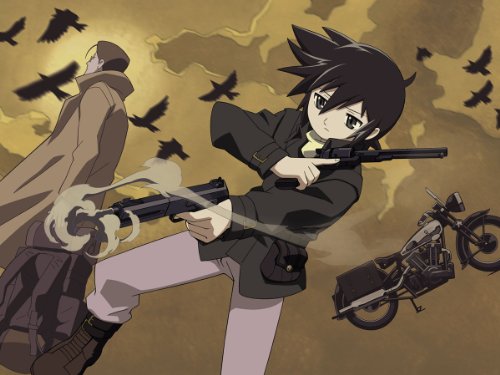 Rating and content warnings the original books are meant for teenaged boys and young adults, but the books are so widely successful, they have also been published in newspapers (slightly edited to make them easier for new readers). Kino's Journey is a very dark series, while the anime should be appropriate for audiences 13+ and up (provided you have a strong stomach for blood, as it can be quite gory and violent, definitely worse than shounen anime), it also touches on many disturbing and triggering topics (murder, slavery, cannibalism, human experimentation, war, natural disasters, escaping a "cult of personality," medical/surgical horror, mixing reality and fiction, the deaths of children, to name the most obvious!). 
(Placeholder) Based on one of Hans Christian Andersen's longer and most popular works (which very vaguely inspired Disney's Frozen, but is an altogether different stort), The Snow Queen ~Yuki no Joou~ is a very unique take, that spends time and great care in fleshing out Gerda, Kay, their lifestyle and the world they live in, before moving onto the story—the math-loving boy Kay's abduction and brave girl Gerda's journey to rescue him from the Snow Queen—weaving in characters from other stories by Hans Christian Andersen along the way! The most accurate to the original story that I've seen as the Soyuzmultfilm adaptation, but this one captures the spirit of the original characters and seems to respect the original tale(s), while also giving the viewer a new and unique experience! This is one of the last works directed by Osamu Dezaki (think Black Jack OVA, the much-praised second half of Rose of Versailles, Nobody's Boy Remi, etc.) who also gave it his unique character designs... the art is not always as skillful as would suit his very realistic and detailed designs, but when it looks good, it does give it a very classic feeling, although his style suits traditional animation best. 
GOSICK is a more recent work, but I suppose it's been long enough that there are some people unfamiliar with it! This one isn't what it seems and shouldn't be judged by the first episode (it seems an absurdly simple case, but that's because it only setting up a bigger mystery that takes the next few episodes to solve!), but if you came looking purely for mysteries, it might leave you disappointed... it's no Detective Conan. But, if you came looking for a touching story of friendship slowly turned romance, an exciting thriller with perils and suspense, and a well-crafted, unique, acid-tongued heroine with a troubled past who develops into a better person over the course of the series, while solving mysteries, some small (by-the-book mysteries, predictable if you're even passingly familiar with golden age mystery novels, but might be fun for a newcomer), and some great (the biggest mysteries surround the entire kingdom of Sauville/Saubure, the Village of Oracles/Kingdom of Seillune, the royal family, and of course, Victorique herself). Victorique is a very entertaining heroine, brilliant, scathing sarcastic, yet oddly noble and principled, but also, sometimes a bit fussy and picky, even childish. Kujou, who acts as the Watson to her Sherlock, is a bit simple-minded, but a devoted friend and protector, with his own insecurities, stemming from being the third son of an imperial soldier (he is not as strong or as intelligent as his older brothers and, to make matters worse in his father's eyes, has a gentle nature and played traditional girl's games like otedama). It's an unusual favourite of mine for many reasons (one being I usually hate moe art styles and I don't like how fetishized and infantalized in an otaku-pandering way moe characters usually are...), but Victorique is a wonderful lead and her childish traits both suit her and make perfect sense in light of her backstory and upbringing. She's very believable and her romance with Kujou is one of the sweetest, most innocent, and chaste I've seen (to the point that early on, I thought fans just liked to ship them, because they just start off as very sweet frineds). The character designs and light novel illustrations by the late Hinata Takeda are absolutely beautiful in their detailed clothes (Victorique characteristically wears Victorian hand-me-downs that make her stand out, so she looks quite Lolita-esque) and Victorique herself exudes confidence and pride! Or childish wonder and amazement... or simply looks eerie and unperturbed.
 Rating and Content Warnings: this series was written for a seinen audience (adult men), but should be appealing to teenagers too (the original light novels also have comedic moments to lighten the mood), but the series is quite bloody and violent, given its focus on murder mysteries. This isn't a series for the faint-hearted. A major character was born as a result of rape (the act is not depicted, but you see the mother abducted, then screaming while giving birth in chains on an altar in episode 19, a scene I personally find hard to watch...) Background and graphics from Alice's Home. |
